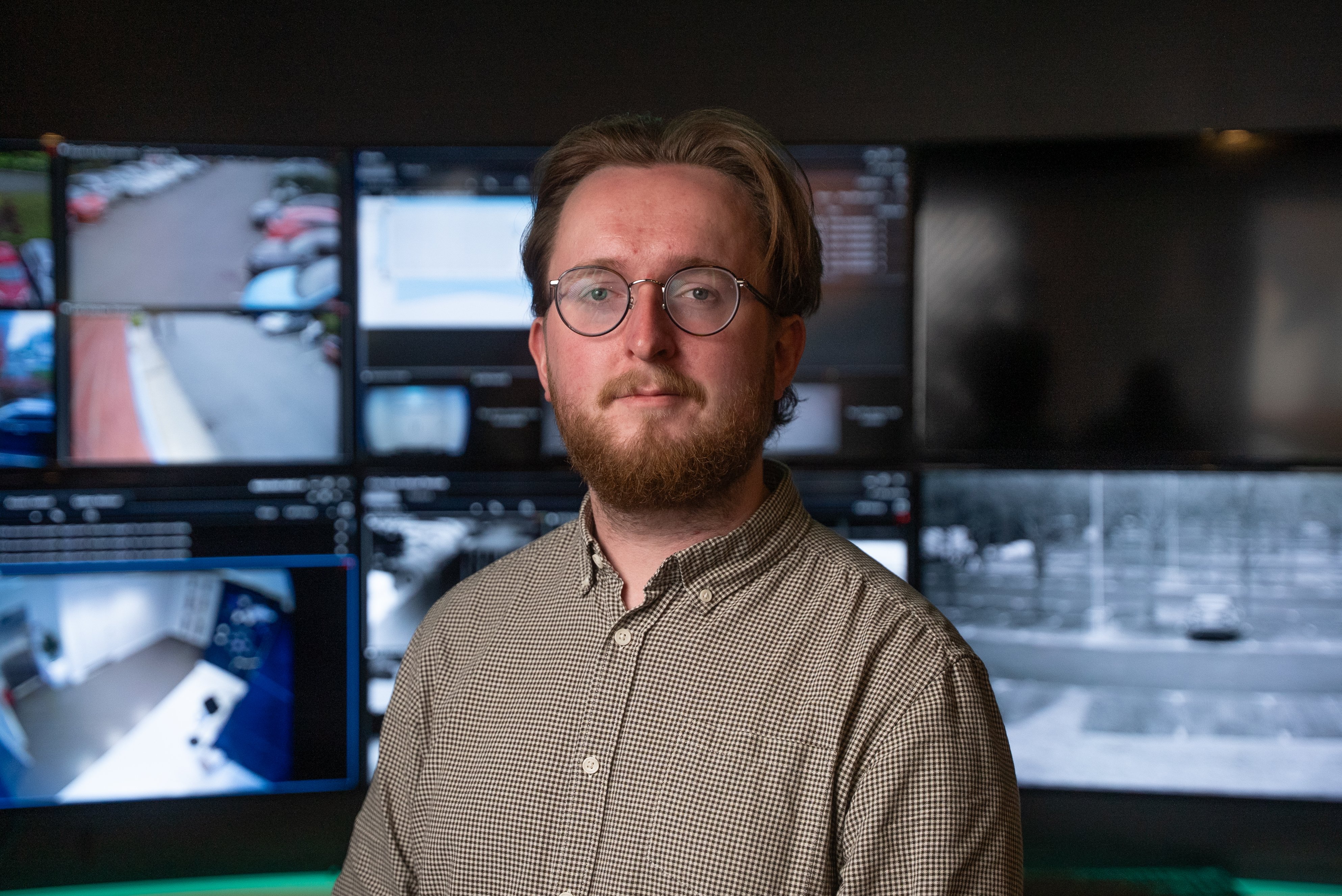One of the most important skills for an intelligence analyst might surprise you.
Just ask Tom Wilde and Matthew Phillips, two analysts in Securitas’ Risk Intelligence Center (RIC). They say that finding success in a career in intelligence requires an innate curiosity about the world around you. That, and the itch to search for answers and solve problems, of course.
“There are set behaviors or soft skills beyond the technical background that will make someone a great intelligence analyst. Curiosity is a big one,” says Matt, who joined Securitas in 2023 and is one of four Global Intelligence Team Leads working around the clock to deliver intelligence that covers AMEA, the Americas, and Europe. “Having a desire to learn more about the world attracts people into this profession, which usually then is an indicator that it’s a career they could thrive in.”

Matthew Phillips, Global Intelligence Team Lead
That’s exactly what landed Matt in this field of work – or, as he says, he “didn’t end up here by accident.” With an interest in history all his life – a commonality among many in the RIC – Matt chose to do his undergraduate in war and security studies, then get his master’s degree in science and international security.
A similar passion led Tom to this career as well: “I love history and examining sources, and I love writing – that’s the main thing,” he says. But it wasn’t until partway through his undergraduate degree in history that he was introduced to the field of intelligence, thanks to course content and guidance from tutors and faculty. That exposure eventually inspired him to pursue a master’s in Intelligence and International Security.

Tom Wilde, Senior Protective Intelligence Analyst
“They opened up this world of intelligence that existed both in the public and private sector,” says Tom, who joined Securitas in 2021 and is now a Senior Protective Intelligence Analyst. “It was during my master’s that I realized this isn’t just something that exists in James Bond movies – with all the explosions and shootouts – and you don’t have to join a government agency to do intelligence.”
These are some of the common misconceptions about the field, but if you ever ask Matt, he’ll play along and admit with a smile that he’s James Bond. Behind the joke, though, he’s quick to say that a real career in intelligence is just as cool.
“I’m biased because it’s how I chose to shape my education, but I think it’s cool that we get to research ongoing global affairs, then provide a valuable service on the back of that,” he says. “We’re really lucky in how diverse some of the things we end up researching are. You’ll stumble into trends and themes you never would’ve heard of otherwise in various countries, and you’ll learn a lot of things you never knew before.”
As part of his role, Matt is responsible for the delivery of the global intelligence report that goes out every day, 365 days a year (“rain or shine, no holidays”) as well as the monthly threat forecast, which raises awareness of threats, flashpoints, and the potential risks they pose to organizations.
The varied nature of the work is also something Tom enjoys about his role. One day he’s assessing potential threats for a client’s upcoming travel and the next he’s researching global water infrastructure and its impact on data centers. Most recently, he’s been writing a defensive screening report – the intelligence world’s equivalent of white-hat (or ethical) hacking where he adopts the mindset of a threat actor and uncovers all publicly available information about a client to help them strengthen their security posture.
In addition to responding to requests for intelligence (RFIs) like these, Tom oversees a team of analysts responsible for daily monitoring reports and briefings.
“As an intelligence analyst, it’s about making a difference for our clients,” he says. “We’re trying to answer, ‘why does this matter for you, what might happen in the future if the situation gets worse or better, and what can you do about it.’ That’s how intelligence becomes actionable and turns into what we call the decision-making advantage.”
This process, Tom says, is inherently human – dispelling another common myth that intelligence is mostly AI-driven. On the contrary, it “requires originality, which generative AI isn’t technically capable of doing – it’s only capable of repeating things it’s heard before,” he says. “The actual production of our intelligence is entirely human-driven.”
That human element is what turns information into intelligence and what makes the work itself particularly meaningful.
“When we get client feedback about how they’ve actually used our intelligence, it’s really rewarding,” Matt says. “Whether it’s helping them keep executives safe or taking steps to protect a site from unrest or potential incidents, knowing we’ve made a difference is really powerful.”
To learn more about our intelligence services and explore a career in intelligence at Securitas, click here and follow Securitas Intelligence on LinkedIn.





